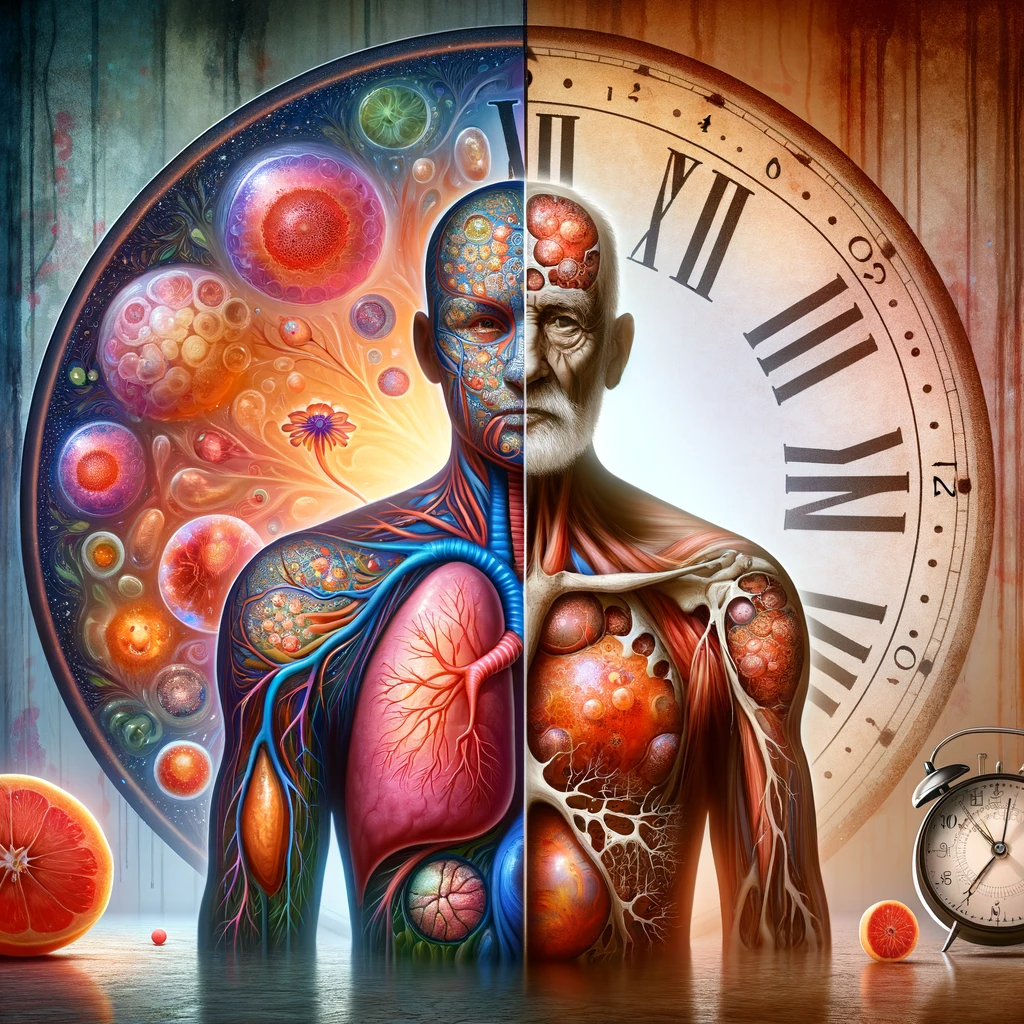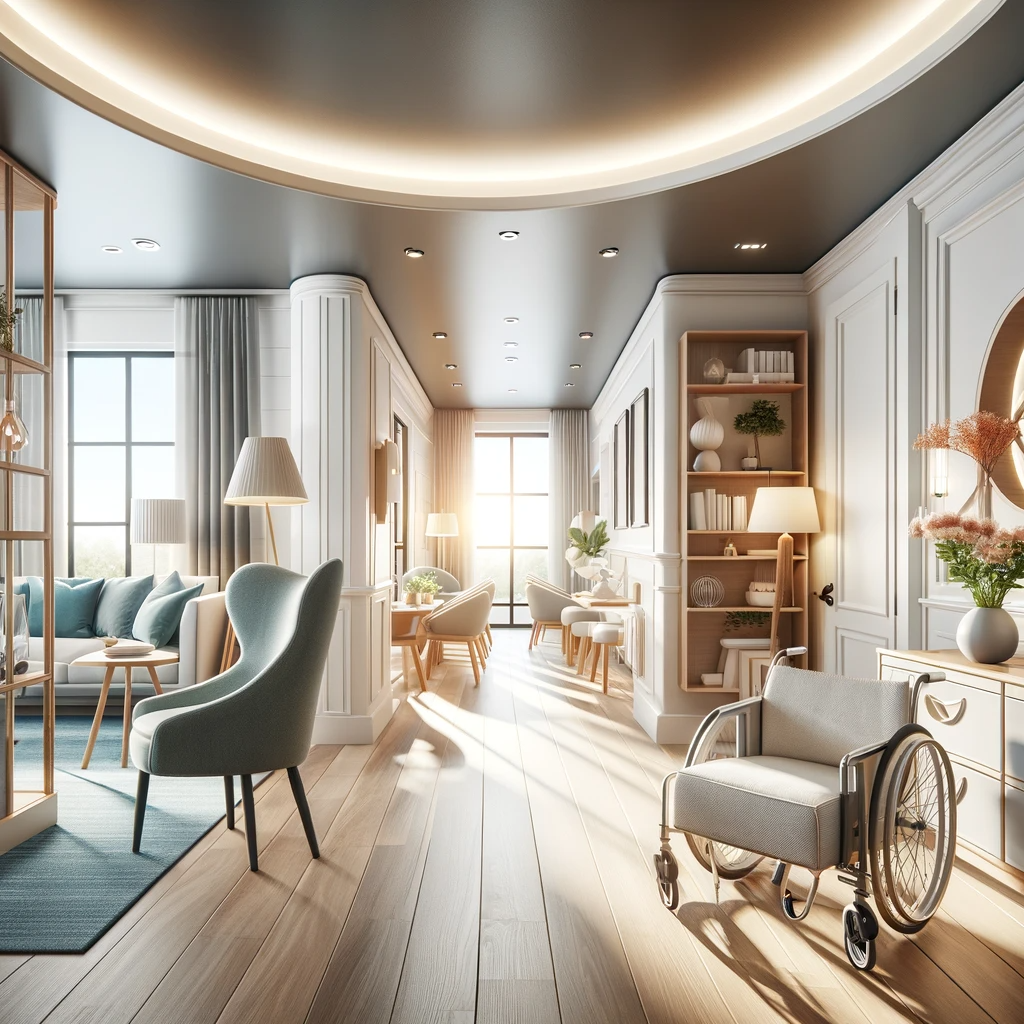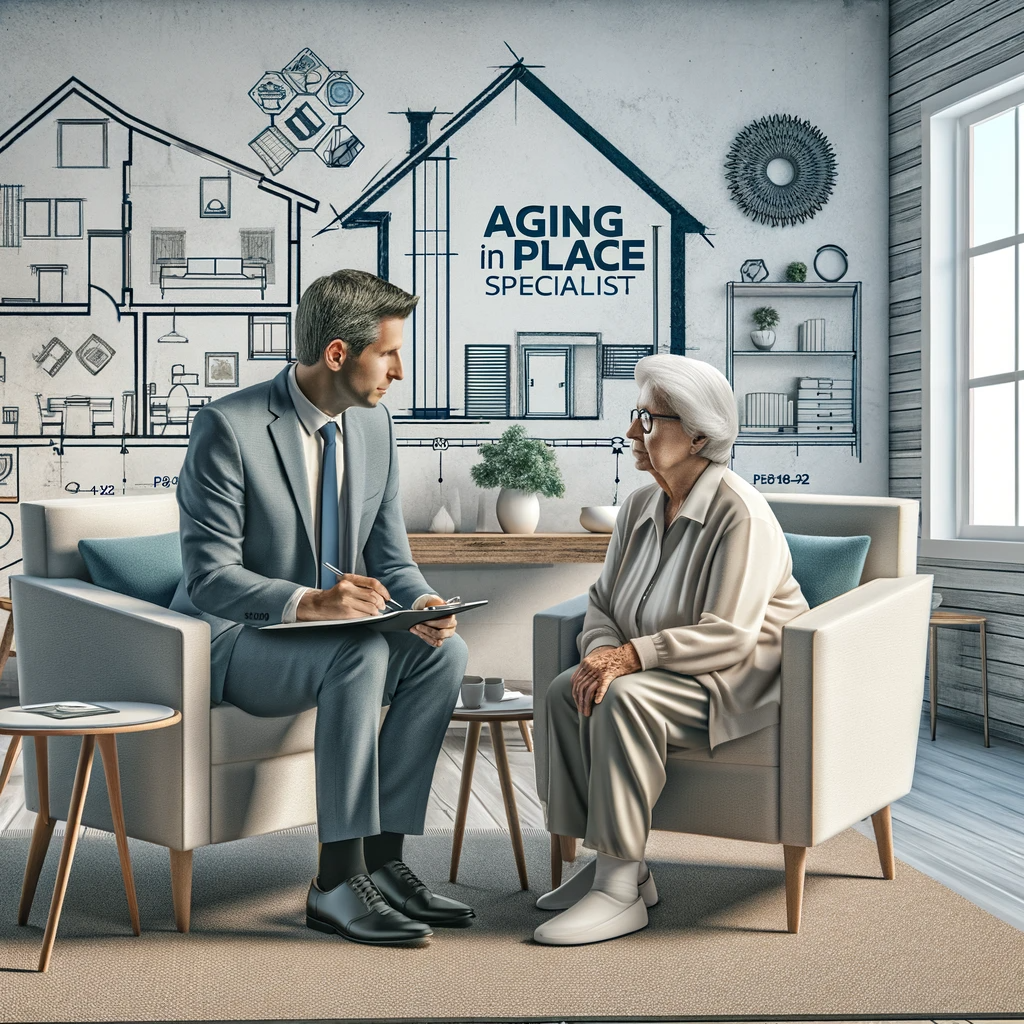Aging in Reverse: Rethinking Investments for a Graceful Future
This is a comprehensive guide on adapting to the aging process. Learn how to modify homes for senior living, embracing aging research insights and practical tips for a comfortable, independent life. Explore the blend of lifestyle changes and home adaptations for a fulfilling, safer future.

In a world where billions are poured annually into anti-aging products, a crucial realization often escapes us: aging is an inevitable, chronic condition. This terminal journey is one every individual must embark upon. For the aging baby boomer generation, it's high time to acknowledge that the most worthwhile investment lies not in fleeting cosmetic solutions but in planning for future care needs.
The Unavoidable Truth of Aging: A Comprehensive Understanding Beyond Physical Changes
Aging, often perceived merely as a physical decline, is in fact a complex journey encompassing various facets of life. In today's culture, there's a growing obsession with reversing aging, a concept fueled by advances in medical research and a societal push towards maintaining youthfulness. However, it's crucial to recognize aging as a natural, multi-dimensional process that impacts not just our physical form but our entire way of life.
Cultural Context: The Quest to Reverse Aging
In our youth-centric culture, the drive to reverse aging is strong. This phenomenon is not just about looking younger; it's about reclaiming the vitality and capabilities of youth. People are increasingly seeking ways to slow down or even reverse the aging process, a pursuit that often leads to a fixation on anti-aging products and treatments.
Harvard Medical School's Pioneering Aging Research
At the forefront of aging research is Harvard Medical School, where scientists are delving deep into the mechanisms of aging. Their studies encompass a range of topics, from the role of growth hormones and gene therapy in reversing age-related changes to exploring the potential of stem cells in renewing old tissues. Harvard researchers are investigating the biological underpinnings of aging, such as cellular aging, genetic mutations, and the impact of environmental toxins on our cells.
Understanding the Aging Process
The aging process in humans is a complex interplay of genetic, environmental, and lifestyle factors. Research has shown that age-related diseases, such as cardiovascular disease and certain types of cancer, can be influenced by factors like diet, exercise, and exposure to toxins. Scientists are exploring interventions like caloric restriction and various drug therapies to promote longevity and extend lifespan.

Biological Age vs. Chronological Age
Key area of aging research focuses on the difference between biological and chronological age. Biological age refers to the condition of our cells and organs, which can be impacted by lifestyle choices and environmental factors. This concept is crucial in understanding that aging is not a uniform process; it varies greatly among individuals.
Innovations in Aging Research
Significant strides have been made in understanding how to slow or reverse certain aspects of aging. For instance, studies involving young mice have shown promising results in reversing age-related declines in muscle mass and brain function. The use of chemical cocktails to rejuvenate old cells and research into epigenetic changes offer insights into potential treatments for aging and age-related diseases.
The Role of Genetics and Lifestyle in Aging
The interplay between genetics and lifestyle is a critical aspect of aging research. While we cannot alter our genetic makeup, lifestyle choices can significantly influence how our genes express themselves. A healthy lifestyle, free from harmful environmental toxins and enriched with a balanced diet and regular exercise, can help in slowing the aging process and reducing the risk of age-related diseases.
Embracing Aging as a Multifaceted Journey
While the quest to reverse aging is understandable, it's important to embrace the theory of aging as a natural, multifaceted process. The groundbreaking research conducted by institutions like Harvard Medical School offers hope for a better understanding of aging and potential interventions. However, it's equally vital to focus on practical aspects of aging, such as maintaining independence and quality of life in daily activities. This holistic approach to aging recognizes the complexity of the process and the importance of addressing it on multiple fronts – biological, lifestyle, and environmental.
Adapting Homes for the Aging Body: A Strategy for 'Aging in Reverse'
The concept of 'aging in reverse,' often associated with medical breakthroughs and lifestyle changes, also extends to the way seniors adapt their living spaces. While most homes are designed for the young and agile, the aging body requires a different environment to maintain functionality and well-being. This adaptation can be seen as a form of reverse aging, allowing older adults to live more comfortably and safely in their own homes.

Understanding the Aging Body
As we age, our bodies undergo various changes that can affect mobility, strength, and sensory abilities. Harvard Medical School and other leading institutions are at the forefront of aging research, delving into aspects like the reduction of muscle mass, cellular aging, and the impact of environmental toxins. These studies highlight the importance of adapting living spaces to suit the changing needs of an aging body.
Home Modifications for Aging in Place
Adapting a home for senior living is a crucial step in addressing the needs of an aging body. It involves making changes to accommodate reduced mobility, weakened strength, and other age-related physical changes.
Reducing Fall Risks Falls are a major concern for seniors. Installing grab bars, improving lighting, and ensuring floors are slip-resistant are essential steps in reducing fall risks.
Accessibility and Mobility For those with reduced mobility, stairlifts, ramps, and wider doorways can be critical. Lowering countertops and shelves can help those with limited reach or those who use a wheelchair.
Sensory Adjustments As vision and hearing decline, homes need to adapt. This can include better lighting, visual aids, and devices that amplify sound or convert audio signals to visual or tactile ones.
Incorporating Aging Research into Home Design
Recent advances in aging research provide insights that can be translated into home design. For instance, understanding the role of cell death, gene therapy, and stem cells in aging can guide how we create environments that support health and well-being in old age
Healthy Living Environment
Considering the impact of environmental toxins, homes should have good air filtration systems and use non-toxic building materials and cleaning products.
Supporting Brain Health
Environments that stimulate the brain, such as areas for hobbies or socializing, can help maintain cognitive functions. This aligns with research showing the brain's plasticity and the potential for regenerating brain tissue in older adults.

The Role of Technology in Aging in Place
Technology plays a pivotal role in adapting homes for seniors. Smart home systems can automate tasks, provide reminders for medication, and monitor health metrics. This integration of technology supports a longer lifespan and promotes a healthy lifestyle, key aspects emphasized in aging research.
Embracing a Comprehensive Approach to Aging
While medical interventions like caloric restriction, gene therapy, and research on young cells offer promising avenues for extending lifespan and reversing some aging processes, practical steps like adapting homes are equally important. By creating environments that cater to the needs of the aging body, seniors can enjoy an extended lifespan with improved quality of life, embodying the true spirit of 'aging in reverse.'
Four Critical Considerations for Aging at Home
Bathroom Accessibility and Assistance One of the first areas of concern is bathroom accessibility. Can a wheelchair maneuver easily? Is there enough space for a caregiver? These considerations are vital for maintaining dignity and independence in personal care.
Ease of Access to Clothing Being able to dress oneself is a significant aspect of maintaining autonomy. Ensuring easy access to clothing is a crucial step in fostering self-sufficiency.
Kitchen Adaptations for Meal Preparation The ability to prepare and eat meals independently can greatly impact one's quality of life. Adjustments in the kitchen to accommodate reduced mobility or stamina are essential.
Social Connectivity and Entertainment With age, the risk of social isolation increases, which can lead to depression and withdrawal. It's important to create a living space conducive to maintaining social ties and enjoying hobbies.
The Ultimate Investment: A Safe and Comfortable Environment
For the baby boomer generation, remodeling or purchasing homes should include considerations for these changes. The goal is to create an environment that supports aging in place – a concept that allows individuals to live in their own homes safely, independently, and comfortably, regardless of age, income, or ability level.
Certified Aging in Place Specialists: Your Guide to Aging Well
Investing in consultations with certified aging in place specialists can yield more meaningful and long-lasting benefits than any anti-aging product. These specialists can provide tailored advice and universal design house plans, ensuring your home remains a safe, comfortable, and suitable environment as you age.

Eight Key Factors for Home Adaptation
Safety Considerations Safety should always be a priority, especially in high-risk areas like bathrooms, bedrooms, and kitchens.
Sight, Vision, and Hearing Adjustments Anticipating and accommodating potential impairments in these senses is crucial for maintaining a safe living space.
Mobility Within the Home Preparing for possible mobility issues is essential for maintaining independence and safety at home.
Anticipating Future Health Changes Proactive measures can help mitigate the impact of health changes on your living situation.
The Reality of Aging: Accepting and Adapting
Our bodies inevitably change, and our homes should evolve to accommodate these changes. Ignoring this reality risks compromising our independence and quality of life in our later years.
Embracing a New Perspective on Anti-Aging
Instead of chasing the elusive promise of youth through products, it's more beneficial to invest in modifications and adaptations that support our changing needs. This approach not only ensures a more comfortable and independent lifestyle but also aligns with the desires of many baby boomers to age in their own homes.
As we move forward, redefining what it means to invest in anti-aging means focusing on practical, long-term solutions that enhance our quality of life as we gracefully embrace the aging process.
FAQ: Understanding Aging and Home Adaptations
What does 'aging in reverse' mean in the context of home adaptations?
'Aging in reverse' in home adaptations refers to making changes in your living environment to counteract the limitations of aging. By adapting homes to better suit the needs of older individuals, we can effectively slow the aging process in terms of functionality and independence.
How does the research on young cells and stem cells by Harvard researchers impact our understanding of aging?
Research on young cells and stem cells, particularly by institutions like Harvard, provides insights into cellular aging and the potential for cell regeneration. This research helps us understand how aging at the cellular level impacts overall health, guiding how we can create environments that support healthy aging.
Can gene therapy be applied to the aging process, and how does this relate to home adaptations?
Gene therapy is a promising area in aging research and medicine, targeting genetic mutations that contribute to age-related diseases. While direct application in home adaptations isn't feasible currently, understanding gene therapy's role in slowing aging helps in designing homes that cater to the needs of older adults.
What is the importance of a healthy lifestyle in extending lifespan, especially for older adults?
A healthy lifestyle, including a balanced diet, regular exercise, and minimal exposure to environmental toxins, is crucial in extending lifespan and promoting longevity. For older adults, adapting homes to encourage a healthy lifestyle can significantly impact their overall well-being.
How can we adapt homes to cater to age-related changes in muscle mass and strength?
To accommodate changes in muscle mass and strength, homes can be adapted with features like stairlifts, ergonomic furniture, and easy-to-use appliances. These adaptations help maintain independence and reduce the risk of injuries.
In what ways can a home be adapted to assist those with cardiovascular disease?
For individuals with cardiovascular disease, homes can be adapted to reduce physical strain. This includes installing devices that minimize the need for exertion, such as automated systems, and creating relaxing spaces that promote stress reduction.
What are the benefits of caloric restriction intervention in aging, and does it have implications for home living?
Caloric restriction has been shown to extend lifespan and reduce the risk of age-related diseases in some studies. In home living, this translates to designing kitchens that encourage healthy eating habits and portion control.
How does improving eyesight factor into home adaptations for the aging process?
Improving eyesight is a key factor in home adaptations. This involves ensuring ample lighting, using high-contrast colors for better visibility, and installing visual aids where necessary.
Can whole-body rejuvenation be achieved through home adaptations?
While whole-body rejuvenation may not be fully achievable through home adaptations alone, creating a living environment that supports physical, mental, and emotional health can greatly enhance the quality of life for older adults.
What role do epigenetic changes play in aging, and how does this inform home adaptations for seniors?
Epigenetic changes, which are alterations in gene expression, play a significant role in the aging process. Understanding these changes can inform home adaptations by emphasizing environments that reduce stress and promote a healthy lifestyle, both of which can positively influence epigenetic factors.
All of our guides, downloads, worksheets, Premium courses
Click Subscribe To Get Started.





